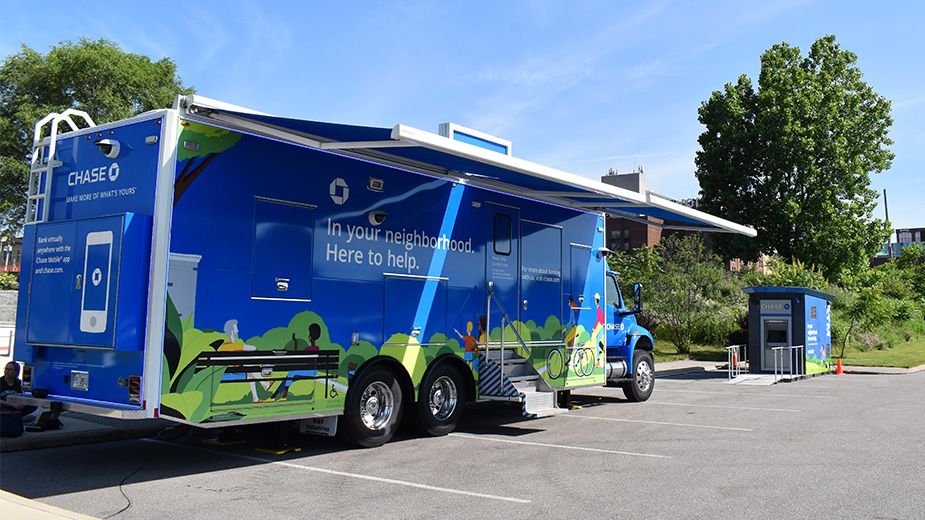Who Says Mobile Banking is Just for Millennials?
YOUNGSTOWN, Ohio – No longer are online and mobile banking a feature embraced almost entirely by tech-savvy millennials and younger customers. Instead, banks say growth in this segment encompasses people of all ages as even older customers have developed the knack (and desire) to conduct some of their banking on their tablets, smartphones or computers.
“I would say 80% of our checking portfolio uses online banking,” says Barbara Radis, executive vice president of retail banking at Home Savings Bank. “It’s one of the largest areas of growth in retail banking. Even more than online is mobile since everybody seems to have a smartphone now.”
Radis, Drew Martin of PNC Bank, Mark Sheehan at Huntington Bank, Sam Kirsch of First National Bank, and Amber Wallace of Farmers National Bank agree that online banking is a vital part of establishing and building long-term customer relationships.
While the majority of online users are younger, Radis says, those age 50 and older have also taken to online banking. “The No. 1 concern among older folks is that they’re afraid they’ll do something wrong,” she says, “that somehow they’ll give out information that they shouldn’t.”
To help allay those concerns, Home Savings is installing online banking kiosks at its branches to help customers navigate its website and its services. Each stand holds a laptop computer that displays the bank’s website on its screen, enabling bank employees to provide a customer with a tutorial on how to conduct business.
“We noticed that some [customers] struggle to understand it, so we have to give them help and support,” Radis says. “It’s not intuitive for many customers and the best way to learn is to try it.”
Teaching customers how to use its products and services is important for Home Savings to be ahead of the curve, Radis says. The bank is always evaluating and re-evaluating its product lines through strategic planning initiatives. “You need to update constantly, and you need all these services to remain competitive,” she says.
Technology allows consumers to perform a variety of transactions via the web or mobile devices. Making deposits and transfers, paying bills, retrieving bank statements, calling up images of canceled checks – all can be easily done through online banking today.
“It’s definitely the most progressive delivery channel we have right now,” says Farmers Bank’s Wallace. “We’re experiencing 30% growth year over year in this area.”
Mobile banking has increased even more rapidly – 52% year over year – Wallace says. “At Farmers, we have a team built around mobile advancement.”
While mobile and online banking have resulted in customers making far fewer visits to bank offices – a trend that affects all retail outlets across the country – it has led to more personalized service at branches, Wallace says. “It allows the branches to be more universal, in-depth, more consultative and less transactional,” she says. “We can spend more time with a customer to make sure we’re meeting all their needs.”
Maintaining that personal contact with the customer remains a high priority at Farmers, Wallace says. Every three years, the bank conducts a survey that gauges customers’ interests and what they expect. “The No. 1 issue for people is having a good relationship with their banker,” she says. “People still value that and aren’t ready to give that up.”
And, as expected, technology issues usually rank No. 2 or No. 3 in the surveys. “This is what the marketplace demands,” Wallace says.
At PNC, Drew Martin says about 60% of its customers use “nonbranch channels” to conduct routine business compared with 39% just four years ago.
“It’s an unbelievable convenience,” he says. “We’re seeing adoption across all of our clients. It depends on their needs for the day.”
Martin says PNC has invested $1 billion across its footprint to upgrade technology and its branches, ensuring that its systems are among the most sophisticated in the industry. This investment encompasses issues such as security and the development of new products. The bank has an innovation and development lab near its headquarters in Pittsburgh.
Recently, PNC hosted an API fest – API is the acronym for applied programming interface – in which it asked its tech teams to come up with new ideas that could be placed in the pipeline for new-product development. “Innovation is critical and we take a lot of pride in that,” he says.
Moreover, the easier online banking becomes, the more efficiencies it brings to both the customer and the bank, says Mark Sheehan, executive vice president, director of payments and channels at Huntington Bank.
“Simplicity matters,” he says, referring to the design and functions of the Huntington website. “Often, it’s not about inventing new products, but rather making it easier.”
As websites and mobile apps become more user-friendly, the easier it is for customers to navigate, especially those new to online banking. As it stands, younger people are more likely to use mobile banking, although Sheehan says that the gap between those 55 and over and others using branch services is just 10%.
“Mobile is the lowest channel that the 55-and-over group uses,” he says. “But when it’s online and mobile, it’s a significant portion.”
The market for mobile and online is still in its infancy, Sheehan observes, and has plenty of room to grow.
“We’re seeing great success,” he says. “Whenever you roll out new functionality, there’s a learning curve. That’s why we test them.”
Ensuring that bank employees have the skills required to help customers with remote banking is another vital component in deploying a successful online and mobile platform, adds Sam Kirsch at First National Bank.
“There’s strong education for our frontline folks,” Kirsch says, noting it’s these employees who interact with customers and help them understand how online banking works. First National has also developed a call-in service that can guide customers who have questions on issues such as online or mobile access. “We’ve developed call centers with subject experts,” he says, “and some people are more comfortable calling in.”
Recently, Kirsch says, bank experts helped a 94- year-old navigate through paying a bill. “We’ll spend as much time as necessary with a customer,” he says.
Other features such as touch identification security enables a customer to access his mobile account through his fingerprint – each is unique – making it all but impossible for someone else to unlock an account should that phone or tablet be lost or misplaced, Kirsch says.
Ultimately, online and mobile functions place more control in the hands of the customers and make it easier for them to conduct transactions, he says. “One of the segments we see growing are POP platforms,” he says. POP, the acronym for pay other people, is a means of transferring funds to another party via his bank.
“There’s always a balance,” Kirsch says. “Online banking was once a product that the younger generation adopted. But growth in the mass market is significant and the mature market is embracing these channels. We didn’t see this 10 years ago.”
Copyright 2024 The Business Journal, Youngstown, Ohio.


